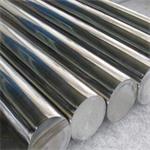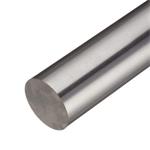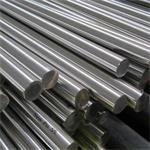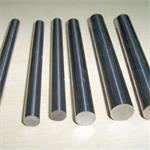Bar specifications for 304 stainless steel round bar:
Round bar: Ф1mm~Ф480mm;
Square bar: 3*3mm~100*100mm
Hexagon bar: S=4mm~S=55mm
Material surface: bright, black leather, grinding, no blisters, cracks and pitting
product name:
304 stainless steel round bar
Product material: SUS301 (1Cr17Ni7), SUS302 (1Cr18Ni9), SUS304 (0Cr18Ni9), SUS304L (00Cr19Ni10) SUS316 (0Cr17Ni12Mo2), SUS316L (00Cr17Ni14Mo2), SUS310S (0Cr25Ni20), SUS321 (1Cr18Ni9Ti), SUS309S (0Cr23Ni13), SUS202 (1Cr18Mn8Ni5N ), SUS201, (1Cr17Mn6Ni5N), SUS410 (1Cr13), SUS420J1 (2Cr13), SUS420J2 (3Cr13), SUS430 (1Cr17), etc.
Bar specifications:
Round bar: Ф1mm~Ф480mm; Square bar: 3*3mm~100*100mm Hexagon bar: S=4mm~S=55mm
Material surface:
Bright, black leather, ground, no blisters, cracks and pitting
Executive standard
National standard GB, American standard ASTM, Japanese standard JIS specifications, has been certified by IS09001, ISO9002.
316L stainless steel round bar:
316 stainless steel contains molybdenum and has low carbon content. It has much better pitting resistance in marine and chemical industrial environments than 304 stainless steel! (316L low carbon, 316N high nitrogen, high strength, 316F stainless steel with high sulfur content, easy to cut stainless steel.
304L stainless steel round bar:
As a low-carbon 304 steel, in general, the corrosion resistance is similar to that of 304, but after welding or after stress relief, it has excellent resistance to intergranular corrosion and maintains good corrosion resistance without heat treatment. Sex.
304 stainless steel round bar: It has good corrosion resistance, heat resistance, low temperature strength and mechanical properties, good hot workability such as stamping and bending, and no heat treatment hardening. Uses: tableware, cabinets, boilers, auto parts, medical equipment, building materials, food industry (use temperature -196 ° C -700 ° C)
310S stainless steel round bar:
The main features are: high temperature resistance, generally used in the boiler, car exhaust pipe. Other properties in general.
303 stainless steel round bar: It is easier to cut than 304 by adding a small amount of sulfur and phosphorus. Other properties are similar to those of 304.
302 stainless steel round bar:
302 stainless steel rods are widely used in auto parts, aviation, aerospace hardware tools, and chemicals. The details are as follows: crafts, bearings, sliding flowers, medical equipment, electrical appliances, etc.
Characteristics: 302 stainless steel ball belongs to austenitic steel, which is close to 304, but the hardness of 302 is higher, HRC≤28, with good rust and corrosion resistance.
301 stainless steel round bar:
Good ductility for molding products. It can also be hardened by mechanical processing. Good weldability. Wear resistance and fatigue strength are better than 304 stainless steel.
202 stainless steel round bar:
It belongs to chrome-nickel-manganese austenitic stainless steel and has better performance than 201 stainless steel.
201 stainless steel round bar:
Is a chromium-nickel-manganese austenitic stainless steel with low magnetic properties
410 stainless steel round bar:
It belongs to martensite (high-strength chrome steel), has good wear resistance and poor corrosion resistance.
420 stainless steel round bar:
“Grade grade” martensitic steel, similar to the earliest stainless steel of Brinell high chromium steel. Also used for surgical knives, it can be done very brightly.
430 stainless steel round bar:
Ferritic stainless steel, for decoration, for example for automotive accessories. Good formability, but poor temperature and corrosion resistance
304 stainless steel is a versatile stainless steel material with stronger rust resistance than the 200 series stainless steel. High temperature resistance is also good, can be as high as 1000-1200 degrees.
304 stainless steel has excellent stainless corrosion resistance and good resistance to intergranular corrosion. In the experiment, it is concluded that the nitric acid having a boiling temperature below 304 of stainless steel material concentration ≤ 65% has strong corrosion resistance. It also has good corrosion resistance to alkaline solutions and most organic and inorganic acids.
304 stainless steel grade: 0Cr18Ni9 (0Cr19Ni9); chemical composition % C: ≤ 0.07, Si: ≤ 1.0, Mn: ≤ 2.0, Cr: 17.0 ~ 19.0, Ni: 8.0 ~ 11.0, S: ≤ 0.03, P: ≤ 0.035.
304 (18Cr-8Ni) material: As a kind of widely used steel, it has good corrosion resistance, heat resistance, low temperature strength and mechanical properties; good hot workability such as stamping and bending, no heat treatment hardening phenomenon.
Use:
Household items (1, 2 tableware, cabinets, indoor pipelines, water heaters, boilers, bathtubs), auto parts (windshield wipers, mufflers, molded products), medical equipment, building materials, chemicals, food industry, agriculture, ship parts.
There is rust in the 304 material, which may be due to the following reasons:
1. The presence of chloride ions in the environment of use.
Chloride ions are widely present, such as salt, sweat, sea water, sea breeze, soil, and so on. Stainless steel in the presence of chloride ions, corrosion is very fast, even more than ordinary low carbon steel. Therefore, there is a requirement for the use environment of stainless steel, and it is necessary to wipe frequently to remove dust and keep it clean and dry. (This will give him a “use is not appropriate.”)
There is an example in the United States: a company uses a oak container to hold a solution containing chloride ions. The container has been used for nearly a hundred years. It is planned to be replaced in the 1990s. Because the oak material is not modern enough, the container is replaced with stainless steel for 16 days. Leakage due to corrosion.
2. No solution treatment.
The alloying elements are not dissolved in the matrix, resulting in a low content of the matrix microstructure and poor corrosion resistance.
3. This titanium-free and antimony-free material has a tendency to be naturally intergranular.
The addition of titanium and niobium, together with a stable treatment, can reduce intergranular corrosion.
A high-alloy steel that resists corrosion in air or chemically corrosive media. Stainless steel has an aesthetically pleasing surface and good corrosion resistance. It does not require surface treatment such as plating to give full surface properties to stainless steel. One of the aspects of steel, commonly referred to as stainless steel. Representative properties include high-alloy steels such as 13 chrome steel and 18-8 chrome nickel steel.
From the perspective of metallography, because stainless steel contains chromium and the surface forms a very thin chromium film, this film is isolated from the intrusion of oxygen in the steel to resist corrosion.
In order to maintain the corrosion resistance inherent in stainless steel, steel must contain more than 12% chromium.
304 is a versatile stainless steel that is widely used to make equipment and parts that require good overall performance (corrosion resistance and formability).
304 stainless steel is a grade of stainless steel produced in accordance with American ASTM standards. 304 is equivalent to China’s 0Cr19Ni9 (0Cr18Ni9) stainless steel. 304 contains 19% chromium and contains 9% nickel.
304 is the most widely used stainless steel and heat resistant steel. Used in food production equipment, Xitong chemical equipment, nuclear energy, etc.
304 corresponds to China’s grade 0Cr18Ni9, 1Cr18Ni9Ti, carbon content ≤0.08%
304L is a variant of 304 stainless steel with a lower carbon content for applications requiring soldering. The lower carbon content minimizes the precipitation of carbides in the heat affected zone near the weld, and the precipitation of carbides may cause intergranular corrosion (welding erosion) in some environments.
Related Reading 310 stainless steel round bar



